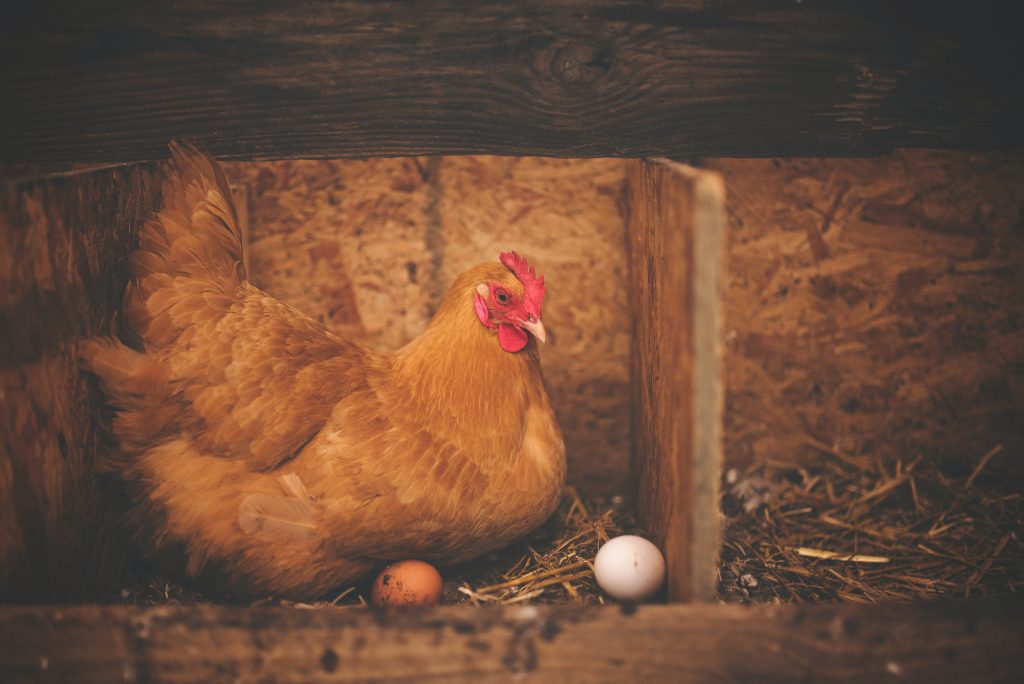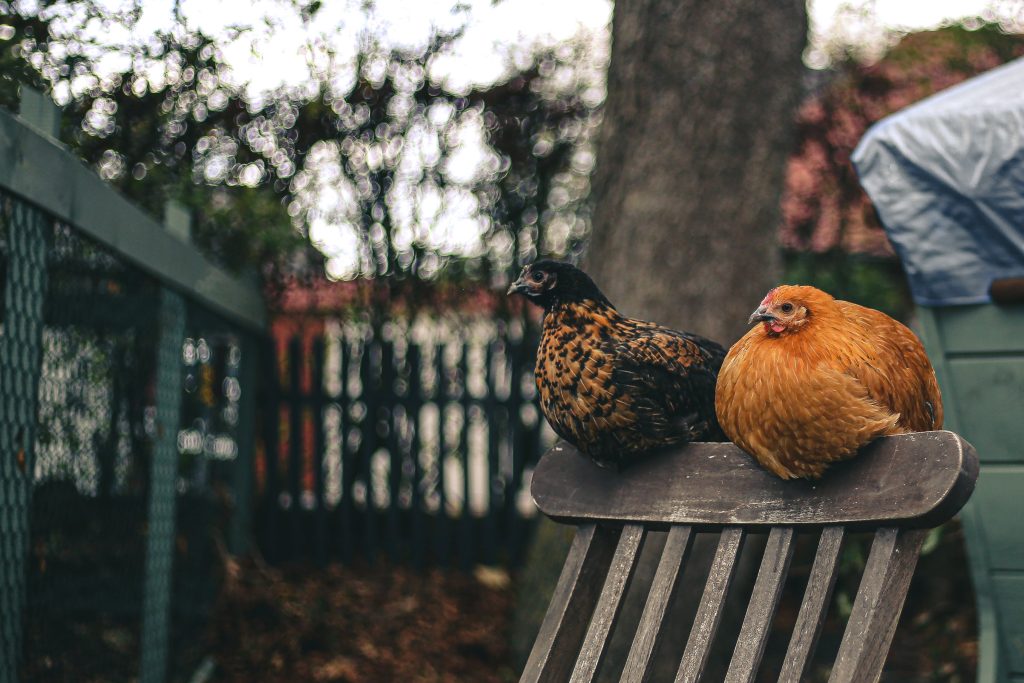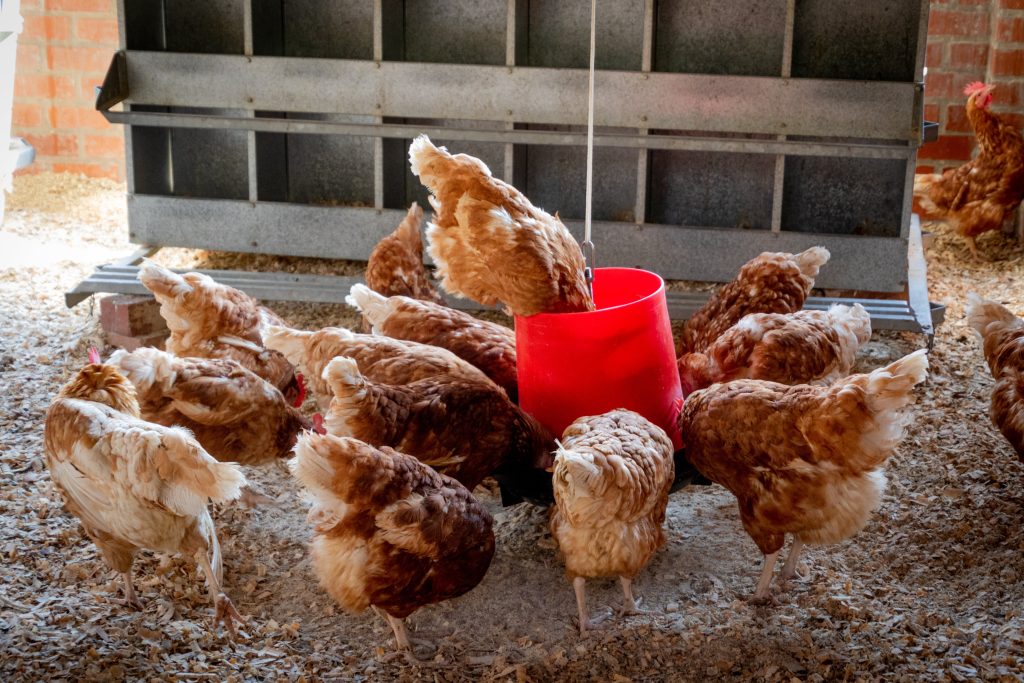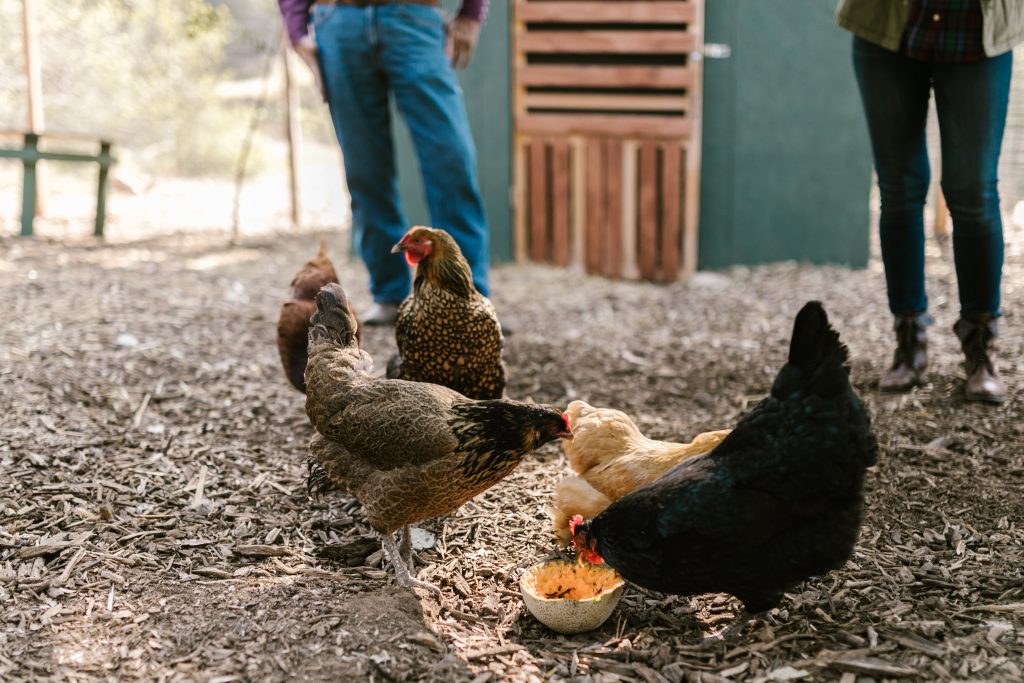Chickens can be a wonderful source of protein, great for families and learning about the circle of life, and a way to make your land feel alive and supportive of you. They are the classic way to start into homesteading, not only because their needs are simple and they are a low-cost entry but because they can be designed to fit so many spaces.
There are a few things, though, that they need badly, and making sure your custom design works for them will take some innovation on your part. There is no one-size fits all design, but there are certain common elements you can identify. Finding a customized solution for these elements will ensure the health of your birds.
In this article, I won’t be giving plans or anything too specific, just some ideas to inspire you. Most of these are best jury-rigged to fit your situation anyway.

Health
Health is the oft-invisible thing that should be at the top of your priority list. I have many stories of acting the chicken doctor, and most of them are for want of design elements.
Of course, you don’t have to care as closely for them as if they were pets like some do. Livestock sometimes die. There is a certain level of mortality you would expect. But at the same time, there is a certain level that is not sustainable, is preventable, and is certainly not indicative that the remaining hens are healthy.
Your chickens will last and be more productive and happier if they consistently get what will make them healthy. That is:
– Fresh air
– Fresh water
– Nutrition
– Proper temperature
– A clean (not sterile, but reasonably clean) environment
– A secure enclosure
– Enrichment
There are several common pitfalls here that may not kill your birds immediately but will degrade their health over time. Many of these are from my own experience (and mistakes!) and what I have found works.
(My suggestions cover stationary coops. Different rules apply to the “chicken tractor” style of coop.)
Clean coop
Fresh air
One of the most important things for anyone is clean, fresh air. This is especially to be accounted for because of the enclosed space we keep chickens in and the tendency towards dust if the bedding is kept properly dry. Where I’m at, fresh air is even more important than temperature. I leave the coop’s windows open 24/7 until it gets below 20 degrees F, and even then, it needs to be open for a portion of the day to make sure the old air circulates out. (Adjust your windows-closed temperature depending on the climate your hens are used to and the breeds you have. Some are much more cold hardy than others.)
Making a large window is essential, and having a second one on the opposite side of the coop gives the option to create a cross breeze, which is perfect for keeping dusty, stagnant air flowing, especially when it is a little warmer.

Bedding options
There are generally two options out there for bedding in your coop. Deep or shallow. Both work, but they have different requirements for maintenance, so you have to choose the one that works for your space and lifestyle.
Shallow bedding has to be just thick enough to give your hens some cushion when they jump down from the roost. If your hens injure their feet when they jump down, they are highly prone to developing bumblefoot, an abscess on the underside of their foot that, if it isn’t broken open and cleaned out, becomes fatal. Not something you ever want to deal with.
Shallow bedding gets completely cleaned out of the coop when it gets dirty, and when this is depends on the number of hens you have in your given space. Perhaps once a week.
Deep bedding, on the other hand, is where you lay down a new layer of bedding over top of the old when it gets dirty. This way, the bedding gets deeper and the poop gets more “dilute” until you do a big cleaning twice a year (we do fall and spring) and start fresh. This method always allows for a cushioning layer of bedding and no chance that the bedding will all be kicked to the corners and leave the floor exposed. (Manure that has dried to the floor is more of a chore to clean up.) You do, however, have to commit to a day of clearing out your coop and adding it to the compost pile when you do your cleaning.
Whichever one you choose, just make sure it is easy to clean, bumblefoot-free, and financially sustainable. These last two items have a lot to do with what your bedding is made of. There are many options out there, including wood chips, sawdust, shredded paper, dried leaves—anything compostable that isn’t moist and isn’t sharp (again, bumblefoot).
The one you can find a cheap source for is probably best. Since we have a sizable backyard and plenty of trees, we rake leaves up and pack them into lawn waste bags to store in the garage and last us the whole year. The only caveat to this “homemade” bedding is to make sure you rake on a day the leaves are good and dry, otherwise it will get moldy.
The key to keeping your coop clean is to make cleaning easy, otherwise you won’t do it. Always design to make things easier on yourself!
Contained Water
Making sure you have a waterer that doesn’t leak and which your hens can’t knock over is of the utmost importance. Not only does it make a mess, but it is super important if you do deep bedding! Moisture introduces an environment conducive to many parasitic and pathogenic organisms, but the one that is sure to show up is mold.
Mold growth can and will kill chickens. Luckily, all it takes is a little bit of design so that you never have to worry about this. There are many options for waterer designs, and you may have to shop around to see which one works in the coop you have.
For instance, ours is placed on a stand with a roost around it so our hens can’t kick bedding into it, but if your coop isn’t tall enough for this, you may find that a hanging waterer works better.
Lastly, make sure they don’t stand on it and poop in it! Not only will you have to change the water more often to keep it fresh, it also causes more disease persistence if your hens are drinking water with fecal matter in it. Some hens will never stand on the waterer, while some will decide they would like to sleep on top of it. So if you have a hen that does this, you’re going to want to do something about it.

In our coop, the solution that took care of both standing on the waterer and knocking it over when jumping off was to make it a little “crown.” This was a plastic tub turned upside-down with some strips of plastic taped to the top of it, sticking straight up so it was no longer a good roosting spot. Easy to take on and off when changing the water and super cheap.
Comfortable Coop
Insulation
One wonderful thing about our coop as compared to many chicken coops is the insulation. When we converted an 8×8 shed, we put a second wall inside and stuffed the ~3 inch space in between with dried leaves. This was a huge help last winter when the temperature was around -10 F for several days in a row. With just one heat lamp, we didn’t even have to worry about the water freezing. It was 30-40 degrees warmer inside than outside.
Now, this level of insulation isn’t completely necessary, but many commercially available coops or even homemade ones have too little. In the end, a little bit of insulation can do a lot for your peace of mind (and the tips of your hens’ combs!).
Roosts
The major mistakes I see for roosts are in making sure you have enough, and that they are the right size! You absolutely need enough space for all of your hens to fit, but giving them extra room helps a lot.
When it comes to where they sleep and whom they sleep next to, I have never met a chicken who isn’t extremely finnicky. Giving some extra room and more than one roost helps to avoid more aggressive chickens picking on the lower-ranking ones and giving you little peck-wounds to clean up.
Roost size is another important thing for foot health. All birds need a roost diameter that is big enough that they can stand comfortably and a roost that is rounded on all sides so that nothing sharp is digging into their foot and potentially causing injury.
Scrap wood (rounded, not splintery) or solid branches work great. Metal also works if your coop stays warm enough in the winter. If it gets really cold, though, it is possible for chicken feet to freeze to a metal roost, so know your climate and your coop.
Enrichment/Nutrition

While I won’t be getting into the nutrition side of chicken health since we’re talking about coop design and not feed selection, it does intersect nicely with enrichment.
Enrichment—anything that keeps an animal mentally stimulated—is essential for health. If your hens can go outside and have something on the ground that is worth scratching in (not bare earth), they will have all the enrichment they need. If not, there are many things you can do.
Chicken enrichment=finding food. Chickens like to scratch and they like to explore. Any way that makes getting at their food more exploratory will make your hens happier. Therefore, any enrichment you offer is also a good chance to supplement their diet to keep both their health and the nutritional content of your eggs and meat high.
The most common commercially available option is a block of compressed seeds and grains, a “flock block,” that can be put on the ground in the coop. DIY options are many. You can hang greens or weeds in the coop, pile up sticks and yard debris to create bug habitat in their outdoor run, provide a variety of perches to fly up to and walk around on… anything you can think of. Trial and error will tell you what your hens like.
Safe Coop
One small word here. If there is a hole in your coop of any size, something will eventually get through it. I’ve even heard stories of raccoons pulling pullets through 1-inch chicken wire. You will never have to worry about nighttime attacks that wipe out your flock if your coop is firmly locked up. That means no holes except the windows. And instead of typical window screen, use hardware cloth.
The only trick is to make sure you close the door before the sun goes down and open it after the sun comes up.
Conclusion
The key takeaway in all of this is to design your hens’ needs into your coop. Anything you allow for in the design is one more thing you won’t have to worry about or do extra maintenance for.
Make it easy. If you do, chickens will be a rewarding and cost-effective addition to any homestead or small backyard operation and can help set you firmly on your way to self-sufficiency!
=====
Become a Survival Dispatch Insider …
We bring together survival enthusiasts and preppers to share skills and knowledge, so you can enhance your preparedness for emergencies and ensure the safety of you and your community.
The Results You’ll Get …
Our community, courses, and memberships are pretty special. We’re focused on the ways it will make a huge difference in your life.
Here are a few of the things you’ll be able to do as a member of Survival Dispatch Insider …
1) Improve your emergency preparedness by learning survival skills and strategies from experienced preppers.
2) Build lasting connections with like-minded individuals that share your passion for safety and readiness.
3) Access a wealth of knowledge and resources to assist in protecting you and your community during unexpected situations.
Click HERE to get started.
=====
